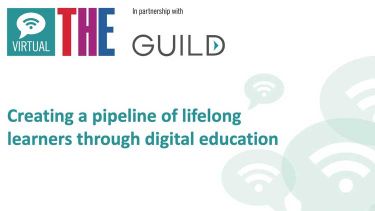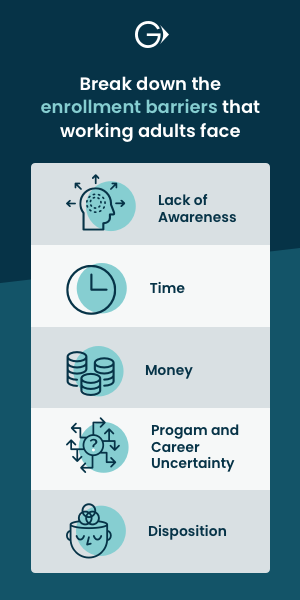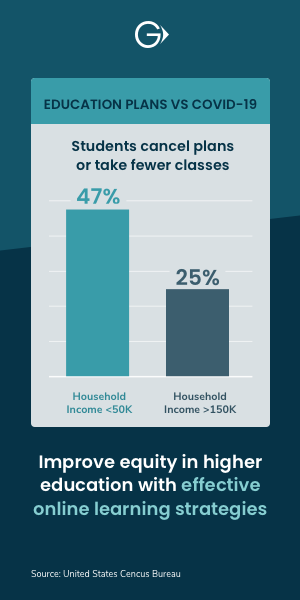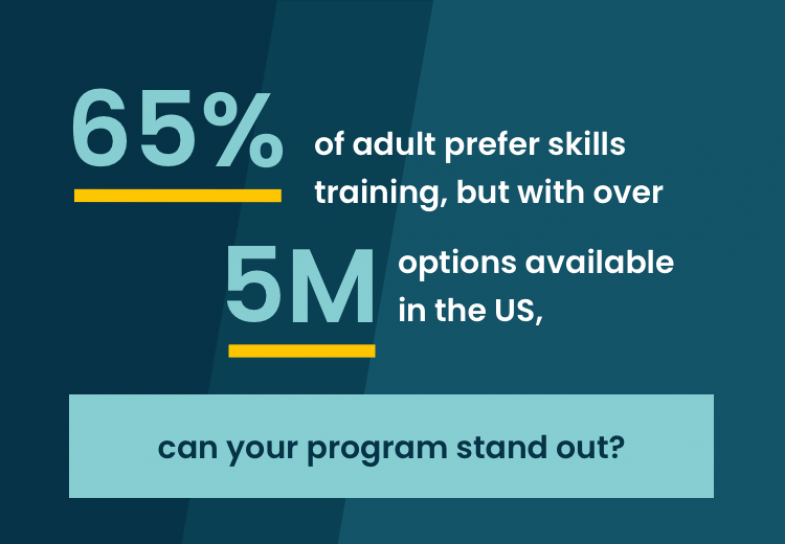
While few degree programs saw enrolment increases in 2020, short-form programs—that is, certificate, micro-credential, and trade programs that can be completed in several months— saw a boom. Among Guild students, applications to certificate programs shot up 149 per cent since the advent of the pandemic in March. Below is a summary of key findings pertaining to student motivators to pursue short-form programs from Guild’s recent guide, Enrolling More Working Adults in Short-Form Learning Programs.
What are students looking for?
Shifts in perception of the labor market and drastic changes to day-to-day life and responsibilities are leading more students to bet on short-form learning programs as an efficient way to advance career goals while mitigating uncertainty around future job prospects.
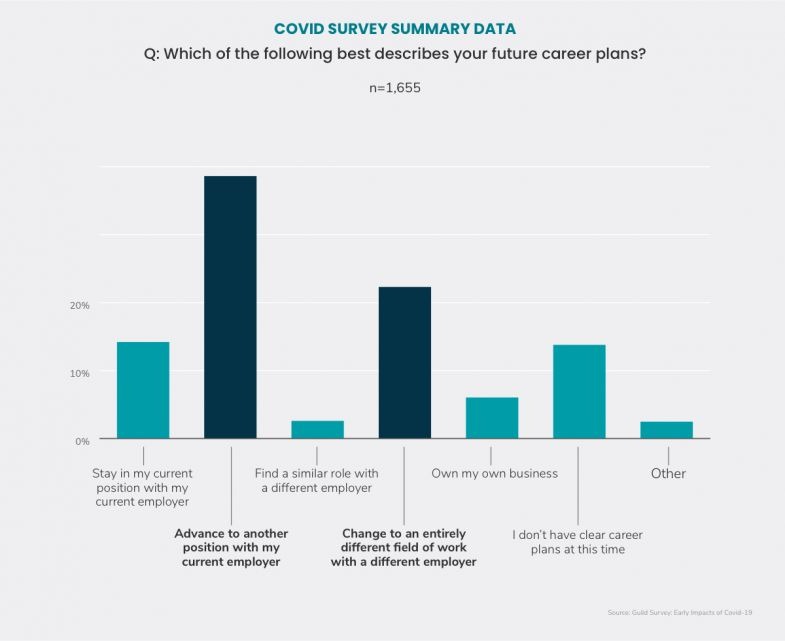
- Lower time commitment: For many working adults, the pandemic has meant dramatic shifts in work schedules, with added caregiving responsibilities that impact the amount of time potential students are able to dedicate to learning. The sense of economic uncertainty stemming from the pandemic has underscored the value of reskilling and upskilling for many working adults, but it can also foster reticence around making a multi-year degree program commitment. More students are looking for the ability to earn a credential and gain valuable skills quickly.
- Targeted competencies: Most current and prospective working adult students surveyed by Guild say that they have a specific career goal in mind. The structure of most short-form programs is predicated on gaining specific skills and competencies. The highly-targeted nature of these programs helps students make clear connections to their career goals while often avoiding the need for general or core curriculum.
- Flexibility: Students look for flexibility across multiple dimensions. Many short-form programs were already fully online before the pandemic and were able to readily provide the flexible learning options students sought. However, Guild survey data indicates that uncertainty around where the labor market is headed has led prospective and current students to place higher value on credentials with flexible applications. This adds critical nuance to the previous point about targeted competencies: students know what they want to learn, and in a time of uncertainty, look to keep options open.
For more information on changes to this landscape – including student demographics, market sizing and a deeper dive into student motivations and Jobs to Be Done – click here to access our latest guide to understanding the short-form learning landscape.


